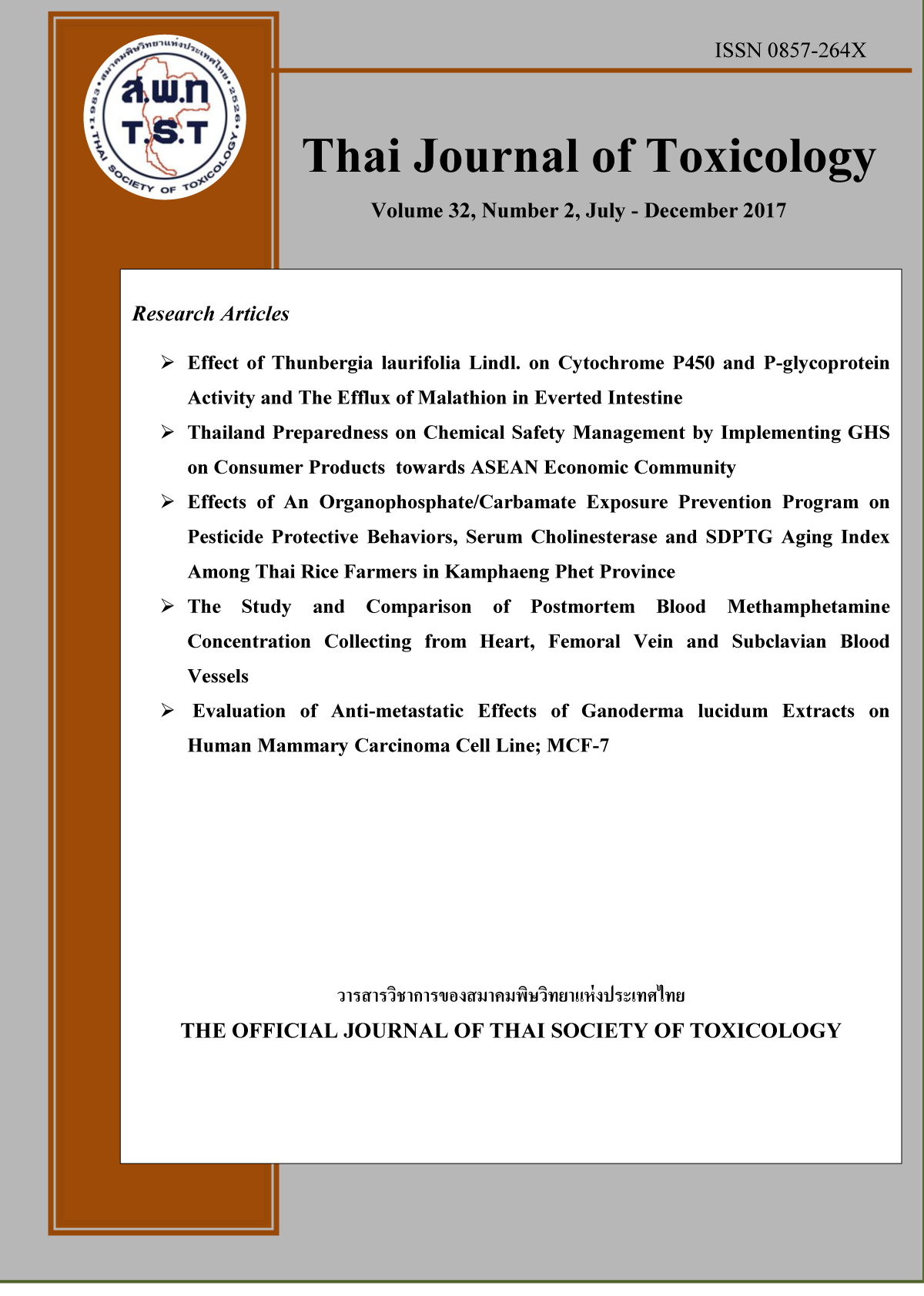Effect of Thunbergia laurifolia Lindl. on Cytochrome P450 and P-glycoprotein Activity and The Efflux of Malathion in Everted Intestine
Main Article Content
Abstract
Thunbergia laurifolia Lindl. is a Thai herbal medicine that has long been used as an antidote for toxic substances and insecticides. However, understanding of its mechanism of detoxification is insufficient. This research investigated the effects of aqueous extracts of T. laurifolia Lindl. (TBA) on cytochrome P450 (CYP), P-glycoprotein (P-gp) activity, and the efflux of malathion. Male Sprague-Dawley rats were orally administered TBA at doses of 0.5, 1.0, and 2.0 g/kgBW for 28 days. The livers were then collected for examination of the CYP activity, and everted intestines were prepared from the small intestines (ileum) for P-gp activity analysis and the efflux of malathion. The administration of TBA (0.5-2.0 g/kgBW) significantly inhibited CYP1A1, CYP2B, and CYP3A4 activities as dose dependent manner. Notably, the CYP1A2 activity was unaltered. The change in P-gp activity was found in the TBA treated group in comparison with the control group. However, an inverse correlation was observed in the everted intestines. Increased concentrations of TBA significantly decreased P-gp activity. Moreover, the efflux of malathion was reduced to 0.78- 0.54 times when compared to the control group. Our results indicated that the detoxification mechanism of T.laurifolia Lindl. might relate to the inhibition of relevant CYPs involved in the bioactivation of toxic substances in the body, and stimulate the excretion of toxic compounds via the induction of P-gp activity. However, the induction of P-gp may not be a contributing factor to malathion detoxification. Further study related to the concomitant exposure of toxic substances and T.laurifolia Lindl in vivo will be required.


